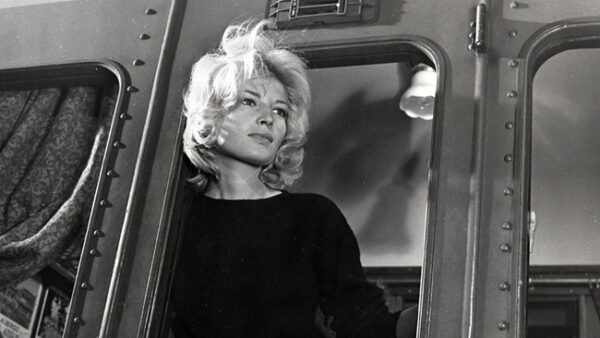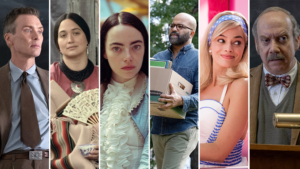‘L’Avventura’ Review: When Love Meets Deceit

Photo Courtesy of CRITERION
★★★★★
Letters from the Ash Flower
Preceding the denouement of Michelangelo Antonioni’s 1960 exhibition of human temperament and volatility — Monica Vitti speaks the words “everything has become so hideously easy,” a subconsciously staggering chain of words. And while being wrapped in a ball of unfettered — palpable fervors, the narrative of “L’Avventura” contains one of the most cohesive tracks that rummages through the individual psyche. And as seen in the aforementioned quote, the plot elicits recurring realizations that — indelibly — evoke dismay.
Perpetually, Michelangelo Antonioni’s vision encapsulates this premodern, voyeuristic tone meshed with a much more conventional hint of worldly existentialism. In addition — his male protagonists commonly undergo confrontations that expose the cavalier tendencies embraced by the whims of masculinity. Combatively — the male individuals are met with antagonistic forces in the name of ravishing women that thrust their aspirations into a pit of misery and inquisition.
In the case of “L’Avventura,” Mr. Antonioni buttonhooks the underlying subtexts in many tenses with Monica Vitti’s portrayal of Claudia as the emotive focal point while Gabriele Ferzetti’s presentation of the character Sandro effectively acts as the antagonistic current that precipitates the evolution of Claudia.
The narrative of Mr. Antonioni’s project consistently exhibits humanistic pragmatism through the elements of crime, mystery, and deceit, which all spearhead the subtle uncertainty of “L’Avventura.” In essence — the film’s plot excels to the stature of the pure antithesis of the uniform Italian drama. The motion picture’s paradigm also emanates from Italian filmmakers such as Federico Fellini since it contains fairly stagnant settings along with sprawling ensemble casts from supporting characters. Other Italian directors, including Bernardo Bertolucci, tended to tap into the bare morality of a single (prevalently male) character — with the external perspective lacking omniscient understanding. Michelangelo Antonioni’s cinematic tales encompass an expedient set of characters who are initially conveyed as sensible individuals — but deftly transform through a scope of elongated conflict.
Fundamentally — there are various indirect parallels of “L’Avventura” to the techniques infused by other Italian directors of the 1960s, such as Federico Fellini. Namely — the cinematography from Aldo Scavarda packs one of the most alluring and transcendent visual punches. The frame procedure of each sequence entails various meticulously constructed shots ranging from wide — dizzying compositions to entrancing close-ups that capture the mental notions of each character from the simplistic complexion of one’s face. Mr. Scavarda’s photography jogged my memory from the first time I ever experienced Otello Martelli’s contextual proficiency coalesce with Nina Rota’s majestic orchestral pieces within “La Dolce Vita.” There’s a genuinely sublime aura that’s exuded when a film’s photography elicits the first-rate magic that only cinema can create.

It’s — proportionally — the screenplay of “L’Avventura” from writers Michelangelo Antonioni, Elio Bartolini, and Tonino Guerra unfolds in a more expressive rather than verbal fashion. It does seem oddly arduous to gauge the disposition of each character, but it — chiefly — gives way to the morality of Claudia, Sandro, and Sandro’s wife Anna (portrayed by Lea Massari). It’s quite seamless to latch onto the wit behind Mr. Antonioni, Mr. Bartolini, and Mr. Guerra’s accentuation of the stakes with no off-kilter individuals who are utilized as expository plot devices.
From a more juxtaposed tense, the characters do possess a semblance of pragmatic principles — but each of the three core individuals reaches an inferior point of indignity. This presents the more neorealist sensation rubbed-off from each character who lingers on points of euphoria that do — eventually — modify to untempered melancholia. In contrast — the screenplay implements the recurring presence of communal establishments like churches to propose the idea of faith to dispose of sins and uplift with edifying epiphanies.
And truthfully, when viewing such a heavenly motion picture on a 35mm film print — Michelangelo Antonioni’s vision dazzles and glows under an illustrious light. Conceptually, Monica Vitti’s performance is extraordinary with the infusion of her natural, idiosyncratic arc that she details on the screen with an immense amount of prowess. And as a whole — “L’Avventura” coherently acts as a work of artistic conceptualism that induces the visceral feeling of dread as well as undying impactfulness.
_________________________________________
Viewed on a 35mm print at the art deco-inspired “Roxy Theater” in Tribeca.








